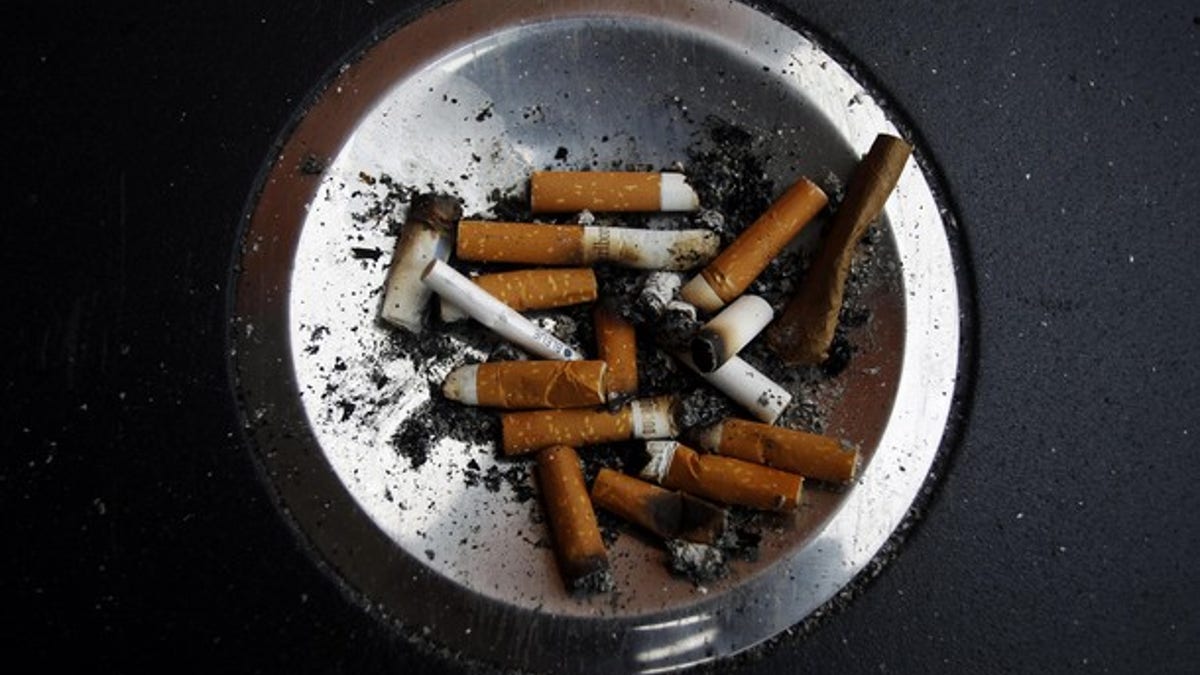
Cigarette butts are left in an ashtray at Atocha train station in Madrid January 1, 2011. A new Spanish anti-smoking law will take effect on January 2 that will prohibit smoking in all enclosed spaces as well outside hospitals, at playgrounds and schools. The Spanish Socialist government wants to put the country in line with the European Union's strictest anti-smoking nations. REUTERS/Susana Vera (SPAIN - Tags: SOCIETY POLITICS) (Reuters)
Thanksgiving travelers who pass through the five major U.S. airports that still allow indoor smoking in designated public rooms face a hidden health hazard, the Centers for Disease Control and Prevention said on Tuesday.
A study by the federal health agency found that secondhand smoke levels directly outside public smoking areas were five times higher than the levels in smoke-free airports.
Hartsfield-Jackson Atlanta International, Washington Dulles International, McCarran International in Las Vegas, Denver International and Salt Lake City International are the only five of the nation's 29 largest airports that still have indoor smoking areas accessible to the general public, the CDC said.
The five account for 15 percent of all U.S. air travel, the agency said.
"The findings in today's report further confirm that ventilated smoking rooms and designated smoking areas are not effective," said Dr. Tim McAfee, director of the CDC Office on Smoking and Health. "Prohibiting smoking in all indoor areas is the only effective way to fully eliminate exposure to secondhand smoke."
Secondhand smoke causes heart disease and lung cancer in non-smoking adults, and even brief exposure to secondhand smoke can cause a heart attack, the CDC said.
The CDC tests, conducted between October 19 and November 1, measured markers for secondhand smoke. Pollution levels found slightly more than 3 feet (1 meter) outside the smoking rooms were five times higher than in four major smoke-free airports used for comparison, the CDC said.
"Airport smoking areas and the areas around them are not healthy - for workers or travelers, particularly children," Brian King, a CDC epidemiologist and co-author of the report, said in a statement.
